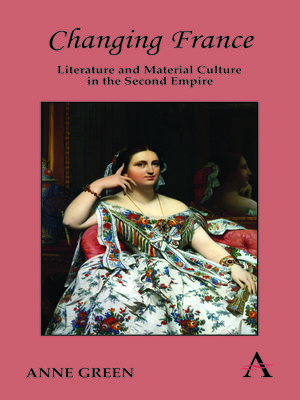Changing France
ebook ∣ Literature and Material Culture in the Second Empire · Anthem Nineteenth-Century
By Anne Green

Sign up to save your library
With an OverDrive account, you can save your favorite libraries for at-a-glance information about availability. Find out more about OverDrive accounts.
Find this title in Libby, the library reading app by OverDrive.



Search for a digital library with this title
Title found at these libraries:
| Library Name | Distance |
|---|---|
| Loading... |
The French Second Empire (1852-70) was a time of exceptionally rapid social, industrial and technological change. French literature also underwent fundamental changes during this period as writers embraced 'modernity' and incorporated new technologies, fashions and inventions into their work. Focusing on cultural areas such as exhibitions, transport, food, dress and photography, 'Changing France' shows how apparently trivial aspects of modern life provided Second Empire writers with a versatile means of thinking about deeper issues. This volume brings literature and material culture together to reveal how writing itself changed as writers recognised the extraordinarily rich possibilities of expression opened up to them by the changing material world.
|The French Second Empire (1852-70) was a time of exceptionally rapid social, industrial and technological change. Guidebooks and manuals were produced in large numbers to help readers negotiate new cultural phenomena, and their concerns – including image-making, diet, stress, lack of time, and the frustrations of public transport – betray contemporary political tensions and social anxieties alongside the practical advice offered. French literature also underwent fundamental changes during this period, as writers such as Baudelaire, Flaubert, Gautier, Hugo and Zola embraced 'modernity' and incorporated new technologies, fashions and inventions into their work. Focusing on cultural areas such as exhibitions, transport, food, dress and photography, 'Changing France' shows how apparently trivial aspects of modern life provided Second Empire writers with a versatile means of thinking about deeper issues. This volume brings literature and material culture together to reveal how writing itself changed as writers recognised the extraordinarily rich possibilities of expression opened up to them by the changing material world.







